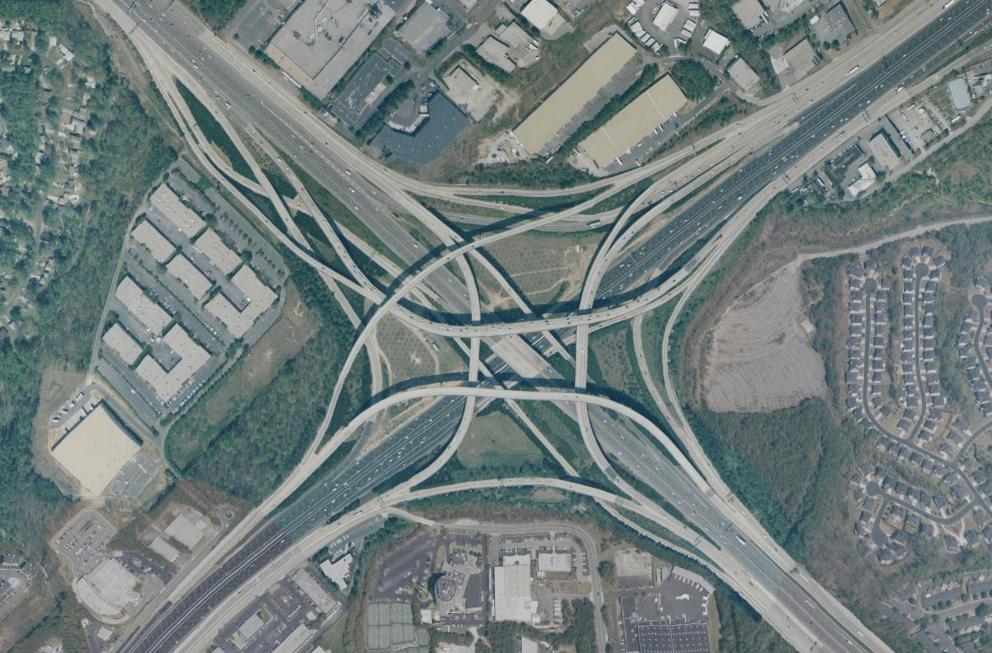Merging accidents are a common cause of traffic collisions, especially in busy urban areas or high-speed highways such as I-85 and I-285, aka spaghetti junction. The act of merging may seem straightforward, but it is one of the most dangerous maneuvers a driver can make. Especially when traffic is heavy or drivers are unsure of the right-of-way rules. Georgia, like every other state, has its own specific laws governing merging and the responsibilities of drivers when merging. Understanding these laws is crucial for protecting yourself on the road and knowing your rights and obligations if you’re involved in an accident.
This guide covers what you need to know about Georgia’s laws on merging accidents. It includes types of merging situations, legal responsibilities, how fault is determined, and the steps you should take if you’re involved in a merging accident in Georgia.
Types of Merging Situations in Georgia
Merging accidents can occur in several different scenarios. Some of the most common include:
- Highway Merging. When a driver enters a highway from an on-ramp, they must merge with ongoing traffic. This often requires drivers to adjust their speed and position to find a safe gap to merge into the highway’s flow.
- Lane Changes. On multi-lane roads, drivers may need to change lanes for various reasons, such as to overtake slower vehicles or avoid obstacles. Merging into another lane without proper signaling or care can lead to a collision.
- Merging at Intersections or Roundabouts. Roundabouts and intersections can also present merging challenges, especially when multiple drivers are unsure of their right-of-way.
- Merging During Lane Reductions. In construction zones or other situations where lanes are reduced, drivers are often required to merge from multiple lanes into fewer lanes. Drivers who fail to merge properly or aggressively attempt to squeeze in at the last minute may cause accidents.
Georgia’s Right-of-Way Laws Regarding Merging
In Georgia, right-of-way laws govern who must yield in merging situations. These laws help prevent confusion and ensure that merging happens in a smooth and safe manner.
- Yielding on Highways. According to Georgia law, the driver who is merging onto a highway from an entrance ramp must yield the right-of-way to the traffic already on the highway. It is the merging driver’s responsibility to adjust their speed and position to safely enter the flow of traffic. However, drivers on the highway should also practice defensive driving and allow space for vehicles to merge safely when possible.
- Lane Changes. When a driver changes lanes on any road in Georgia, they must ensure that the lane they are merging into is clear and that they signal their intentions in advance. Georgia law requires drivers to use their turn signals when changing lanes, and failure to do so can result in a citation. More importantly, improper lane changes can be seen as negligent driving behavior, especially if they result in an accident.
- Construction Zones and Lane Reductions. When lanes are reduced, either due to construction or other reasons, Georgia law requires drivers to follow any posted signage indicating which lane they should use. In these situations, “zipper merging” (where vehicles from each lane take turns merging) is the recommended method for minimizing congestion and reducing the risk of accidents. Drivers who attempt to speed ahead or merge aggressively in construction zones may be found at fault if an accident occurs.
- Roundabouts and Yield Signs. In roundabouts, vehicles already inside the roundabout have the right of way, and entering vehicles must yield. Yield signs posted at intersections or other roadways also clarify who must yield the right-of-way. Failing to yield when required can result in a citation and liability for any resulting accidents.
Determining Fault in a Merging Accident in Georgia
When a merging accident occurs in Georgia, determining fault is critical for establishing liability and seeking compensation for any injuries or damages. Georgia is a “fault” state, meaning that the party responsible for causing an accident is liable for covering the damages. Determining fault in merging accidents often depends on the specific circumstances, but there are some general rules and factors that play a role.
Negligence & Fault
In most cases, the driver who is merging or changing lanes is responsible for ensuring that the maneuver can be done safely. This means that if a driver causes an accident while merging, they will typically be held at fault, especially if they failed to signal, check their blind spots, or yield to other vehicles. However, fault can also be shared between drivers if both parties contributed to the accident in some way.
Comparative Negligence
Georgia follows a comparative negligence system, which allows for fault to be shared between multiple parties. Under this system, each driver involved in the accident can be assigned a percentage of fault based on their actions leading up to the accident. For example, if one driver failed to yield while merging but the other driver was speeding or driving recklessly. Both drivers could be found partially at fault. In Georgia, a driver can still recover damages as long as they are less than 50% at fault. But their compensation will be reduced by their percentage of fault.
Evidence In Merging Accidents
Evidence is crucial for determining fault in a merging accident. Some key types of evidence that may be used to establish liability include:
- Eyewitness testimony. Statements from other drivers, passengers, or pedestrians who witnessed the accident can help clarify what happened.
- Traffic camera footage. In some cases, traffic cameras may have captured the accident, providing valuable visual evidence.
- Police reports. A police report can provide an official account of the accident, including any citations issued to drivers.
- Vehicle damage. The location of damage on the vehicles involved can help reconstruct how the accident occurred.

Steps to Take if You’re Involved in a Merging Accident in Georgia
If you are involved in a merging accident in Georgia, it’s essential to take certain steps to protect yourself and preserve your legal rights. Here’s what you should do:
First Set Of Steps To Take
- Check for Injuries. First and foremost, check yourself and others for injuries. If anyone is injured, call 911 immediately to request medical assistance. Even if injuries seem minor at first, it’s still a good idea to seek medical attention. This is because some injuries may not be immediately apparent.
- Move to Safety. If the vehicles are blocking traffic or are in a dangerous location, move them to a safer spot if possible. In Georgia, drivers are encouraged to move their vehicles out of the road after a minor accident to avoid further hazards. However, if the accident is severe or there are injuries, it’s best to leave the vehicles where they are and wait for law enforcement to arrive.
- Call the Police. Georgia law requires drivers to report any accident that results in injury, death, or significant property damage. Even if the accident seems minor, it’s still a good idea to have a police officer come to the scene to file an accident report. The police report can be a valuable piece of evidence when determining fault.
Next Set Of Steps To Take
- Exchange Information. Exchange contact and insurance information with the other driver(s) involved in the accident. Make sure to collect details such as:
- Full name
- Address
- Driver’s license number
- License plate number
- Insurance company and policy number
- Document the Scene. Take photos of the accident scene, including the damage to the vehicles, the location of the vehicles, any road signs or signals, and any skid marks or debris. If there are witnesses, try to get their contact information as well.
- Notify Your Insurance Company. Report the accident to your insurance company as soon as possible. Provide them with all the necessary details and documentation, and follow their instructions for filing a claim.
- Consult an Injury Attorney. If you believe that the other driver was at fault for the accident or if you have suffered significant injuries or property damage, it’s a good idea to consult with a personal injury attorney. An experienced attorney at Rebecca Kay Sapp Law Firm can help you navigate the legal process, gather evidence, and negotiate with insurance companies to ensure you receive fair compensation.
Common Injuries and Damages in Merging Accidents
Merging accidents, like other types of collisions, can result in a wide range of injuries and damages. Some of the most common include:
- Whiplash. Rear-end collisions, which are common in merging accidents, can cause whiplash, a neck injury caused by the sudden jerking motion of the head.
- Back and Spine Injuries. The impact of a merging accident can lead to injuries to the back and spine, including herniated discs, fractures, and soft tissue damage.
- Head Injuries. Head injuries, including concussions and traumatic brain injuries, can occur if a driver or passenger’s head strikes the steering wheel, dashboard, or windows.
- Broken Bones. The force of impact in a merging accident can lead to broken bones, especially in the arms, legs, and ribs.
- Property Damage. In addition to personal injuries, merging accidents can result in significant damage to vehicles, which may require costly repairs or even vehicle replacement.
Georgia’s Statute of Limitations for Car Accidents
If you’ve been involved in a merging accident in Georgia, it’s essential to be aware of the statute of limitations for filing a lawsuit. In Georgia, the statute of limitations for personal injury claims related to car accidents is generally two years from the date of the accident. This means that you have two years to file a lawsuit seeking compensation for injuries or damages. If you fail to file within this time frame, you may lose your right to pursue legal action.
How to Prevent Merging Accidents
While accidents can happen even to the most cautious drivers, there are several steps you can take to reduce the risk of being involved in a merging accident:
- Use Your Turn Signals. Always signal your intentions when merging or changing lanes. This gives other drivers time to adjust their speed and position, helping to avoid collisions.
- Check Blind Spots. Before merging, be sure to check your blind spots for other vehicles. Use your mirrors, blind spot detection, and physically turn your head to ensure the lane is clear. Make sure to always check both ways as well on certain highways in Georgia. Such as in Stone Mountain on I-78, where some lanes may be merging from the left.
- Match the Speed of Traffic. When merging onto a highway, try to match the speed of the traffic on the highway. This makes it easier to find a gap in traffic and reduces the likelihood of a collision.
- Be Patient and Courteous. Avoid aggressive driving behaviors such as cutting off other drivers or speeding ahead to merge. Be patient and wait for a safe opportunity to merge.
- Stay Alert. Pay attention to road signs, signals, and the behavior of other drivers. Staying alert and aware of your surroundings can help you anticipate potential hazards and react appropriately.
Conclusion
Understanding Georgia’s laws on merging accidents is crucial for staying safe on the road and knowing your legal rights if you’re involved in an accident. Merging requires careful attention, proper signaling, and a clear understanding of right-of-way rules. If you find yourself in a merging accident, taking the right steps can protect your legal rights and help you recover any damages or compensation you may be entitled to. By staying informed and practicing safe driving habits, you can help reduce the risk of merging accidents and protect yourself and others on Georgia’s roads.

